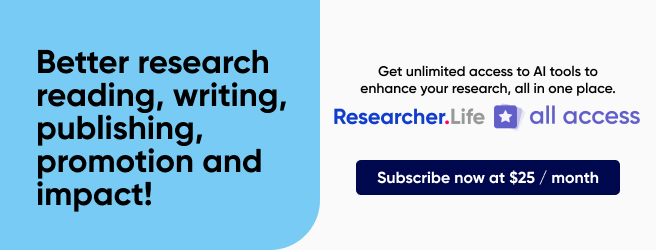Help your publisher help you: 6 Short tips to make the road to publication smoother

Publishing scientific papers is a deeply demanding, albeit unavoidable, part of a researcher’s life. No longer can we be content to explore science for the sake of itself – we need to make our findings known to the rest of the world. How many others may be attempting what we have attempted, and failed? Or perhaps, how many others could benefit from our insights into why something worked? Or then again, what could we learn from them in turn, if we share our findings and build upon each other’s work?
And yet, the simple mention of writing a paper comes with mixing feelings. On the one hand, it comes with that satisfying feeling of completion, the realization that you have reached your targets, completed a project and are now ready to share your results with your academic community. It feels good in its own right: it’s a well-deserved mark in your career. But at the other end, you know what follows: hours upon hours of transcribing your field notes or lab scribbles into intelligible text; formatting that text into journal-specific requirements; then, all the trouble getting your figures where you want them to be, without completely messing up your text; getting all of your co-authors to agree on what journal to submit your paper to; and finally, the submission itself!
Assuming that everything goes well, that you have not overlooked file size limits, that your internet connection remained steadfast when you moved from page to page to page in the submission system, that you have all your co-authors’ details and conflicts-of-interest statements at hand, that your phone doesn’t keep ringing whilst you are concentrating on this, and that the fire alarm doesn’t go off, you submit your paper at last - and then the wait begins.
You’ll get your (generally) automated email confirming the receipt of your paper. And then you do your best to forget that you ever submitted that paper, at least for the next couple of months. Better to take on temporary amnesia than getting that stomach-drop feeling every morning when you check your inbox.
We get it. Publishing is important. You could even say it’s almost the whole point of your work. If you never publish, how do you even prove you actually did any work? You need that showcase of publications for almost everything you want to do in academia, be it recruiting colleagues, applying for funding, or moving elsewhere. Your publications are your credentials, sometimes shinning brighter than your actual qualifications. It’s no wonder each article consumes a substantial number of hours in your working life, not to mention the emotional unease every submission brings.
“Will the reviewers get the meaning of my paper? Will they be inclined to actually read and understand it, or will they dismiss it because they’ll be going through it on a “bad day”? What if I get that nasty reviewer who keeps turning down papers by anyone else who’s not in their personal approval list? Will the editor agree my article fits the scope of their journal? And, oh, the horror – what if they suggest a more “specialized” journal?”
And the anxiety drags on.
But what if you could – you know, proactively – help your publisher? Help your editor, your reviewers, everyone who will ever handle your manuscript during the publication process?
As it turns out… (*drumroll*) you can. Here are 6 short tips to make sure you help your publisher help you:
- Think why and whom are you writing for
- Do your research on potential editors
- Nothing short of the perfect Abstract
- Don’t be afraid to suggest reviewers
- As obvious as it sounds, be responsive
- Never hesitate to ask for help
Before I talk about these, I’d like to share a brief but momentous academic publishing experience of my own.
I have had my share of being an author as well as a contributor. The latter is the side in which you just produced a lot of data for a project, so you are rightfully listed as an author. But when it’s time to submit the manuscript, you honestly just check your part, because you don’t really know and can’t really comment on how the study was designed (which may even have happened before you joined the team), how ethical approval was granted, or how the clinicians followed up with the patients based on the data you obtained. So you check the manuscript, confirm your part in the methods and results is good, and trust the first author to chase up everyone else to do the same for their contributions.
But I also had the experience of being the first author. Spending weeks being convinced by my supervisor that my research monograph deserved being translated into a paper. Finally accepting being dragged into the rather painful cycle of write, re-write, write, re-write, submit, get reviewer feedback, and oh, rewrite once more. I remember frequently asking myself, “How can the reviewers not understand this? How could I possibly have failed to make myself clearer as to why we designed the protocol this way?” But it was alright in the end. Hats off to the editor – who made a really good and professional job of mediating the authors-reviewers iterations, and it was published in the end.
Since then, I have moved on from being a researcher to working for a scientific publisher and boy – is there a difference to how both sides work! While authors may believe it’s mostly a matter of navigating the whims of editors and reviewers, there are actually a lot of standard procedures to follow, checks that must be carried through, and a lot of intervention from the publishing staff themselves to make sure that human flaws or biases do not affect the scientific value of good peer-review.
So here are six little pieces of advice I would have liked to have from someone in publishing, back when I was writing.
1. Before you start writing, think why and who are you writing for.
It’s worth taking the time to think about this, as it will affect everything you do further down on your checklist. Whom will your paper be for? Your very direct colleagues, working on the same problems as you? The broader community in your whole field? Perhaps you are hoping to reach across scientific communities, even out to the general public?
This is important, because it will affect your choice of journal Take a moment to consider: “am I submitting here because I just want my paper to be coated in prestige, or because as a reader I would expect this article to be in this journal?”
2. Do your research (after all the research you’ve already done, that is).
It is possible that your cover letter will be addressed to a specific editor. If the journal you are submitting to offers this possibility, and depending on the expertise and on the size of the journal you are submitting to, your range of choices may be really limited, or you may have to sift through a good half-a-dozen pages of editors to find the right one. But trust me on this one – if you can do this, it’s very much worth it.
Finding an editor with the right expertise can kick-start the entire handling process of your manuscript. An editor who understands your specialty and your paper is more likely to handle it sensibly (as well as to accept editing it in the first place), more likely to find the right reviewers and more likely to oversee the peer-review process with interest and care.
Don’t just select an editor because he/she is a resounding name in your field. Don’t select an editor because you’ve heard they are nice people. Don’t even choose an editor because you’ve previously had a good experience with them – you want someone impartial but above all someone with the right expertise to oversee the peer-review of your manuscript. (It may feel time consuming, but one or two hours you spend looking at your potential preferred editors’ publications will tell you how adept they can be at handling your manuscript, and this is exactly what you want.)
Although naming a preferred editor is no guarantee you will get him/her, it does mean you are doing everything you can to make sure your paper’s journey through peer review gets a positive start.
3. While we’re at it, make sure your Abstract is, as much as possible, perfect.
Yes, your whole manuscript will change – perhaps a few times – during the review process. However, if there’s one thing worth getting right the first time, it’s the Abstract.
A good Abstract will open doors for the rest of your manuscript to follow. Bear in mind that this is what editors and reviewers alike will see first, and they will judge their ability to review your manuscript – as well as judge you as a writer – based on it. Not only does it feel personally offending to read “your Abstract needs reviewing” (after all, who better than yourself to know how to summarize your own work?!), but you certainly don’t want editors and reviewers to form a wrong first impression and suspect your manuscript is flawed right from the start, because your Abstract failed to provide an informative and precise overview of your work.
A little pro-tip – while we are all conscious of word limits in Abstracts, make sure to mention the methods you’ve used. Don’t fall for the temptation of explaining your rationale and then listing your results – if you completely omit the methodology you are risking getting reviewers who will get to the end of it and say, “It all looks fine, but I am no expert in these methods. Find someone else to review. Sorry!”
4. Proactively help your editor and suggest reviewers for your own manuscript.
There is absolutely nothing wrong with suggesting reviewers for your paper. In fact, though your editor may disagree completely and invite his own preferred experts, you would be surprised at how useful this can be it. While authors from any specialty are welcome to suggest reviewers, this can be particularly beneficial for niche areas where very specific expertise is required – and you, as a researcher and member of that community, will have perfect insight into who the experts are, either from seeing them at conferences or from reading their papers when preparing your research.
However, do not be the person who names their friends as a reviewer. Remember that scientific communities tend to be closely-knit fields where everyone knows everyone else through common acquaintances and colleagues. Even if the publisher doesn’t catch you – and, most times, they will – someone else is bound to notice if all your reviewers are your friends and colleagues. Remember this is your name – and in the case of open peer-review, their names as well – at stake. Don’t create conflicts of interest for yourself! Remember that research papers now tend to be forever available online, and it’s in everyone’s interest not to show shoddy work. The Internet never forgets!
5. Be responsive and communicate with your publisher.
It may be exasperating to receive a lot of communication from your publisher, and sometimes directly from your editor, about your manuscript in review. We know that once you submit, you need to get on with the rest of your life (good on you, not hanging about for the decision on your submitted paper!). And yes, everyone in science leads a packed, busy schedule.
However, if you are an author and your publisher contacts you, chances are you want to get on to it quickly. No email you receive from your publisher or editor will be void of important content. You’ll never receive an email saying, “Hi! Just checking in. Your paper is good. Nothing to worry about.” If you are getting an email, it means some action is (probably urgently) required from you. This is particularly critical at the early stages in the process, and if you do not reply quickly you will be risking a publication delay. There could be questions about your figures, your Ethics statement, about co-authors affiliations or just general queries about the manuscript that need to be solved before your paper even sees an editor. Do bear in mind that your publisher is working for you and wants to work with you – but they can only help insofar as you help them, too. So if you get an email, do reply – the sooner the better.
After your manuscript enters peer-review, you are much less likely to receive a call for action until it’s time to actually revise. However, this also does mean that if you do receive emails at this stage, you will be expected, as an author, to prioritize them. Sometimes the editor may find a need for additional reviewers and expect you to make suggestions – if, of course, you have not done so at submission. Sometimes your revised manuscript wasn’t really the revised version (problems with saving multiple versions of the same file, anyone?). Some other times, reviewers will raise very important questions which the editor will wait for you to address specifically before leading the process forward.
Whatever it is, treat all communication regarding your manuscript with due importance.
6. Never hesitate to ask your publisher for support.
It’s the publisher’s job to help you, the author. If you need any support at all – be it with the system, in dealing with reviewers, replying to the editor, re-editing your manuscript, addressing important concerns, or just asking for an extension to work on your revisions – the publishing staff at your journal will always be at hand to provide all the assistance you may require. In the instances where the staff cannot help you directly, they will happily and readily refer you to the people who can give the right support.
If you ever feared communicating with your publisher – lest your “perhaps it’s a silly question” triggers immediate rejection – get that idea out of your head. It’s the publisher’s job to help you and support you at every step in the publishing journey, and for any problems that have solutions, they will find and present you with those solutions. After all, at the end of the day, the most satisfying task for the publishing staff is reaching the end of a successful, perhaps bumpy, peer-review track, and finally taking your manuscript through to that happy new status: “Accepted for Publication."
Afterword
You did once, and you’ll do it again. Publishing is as much a part of research as are grant-writing, recruiting, networking, presenting, attending conferences, and every other parallel activity that orbits around the research work itself.
As you do it, you’ll become better at it. Every new submission will feel slightly less frightening than the previous. Each message from an editor and each reviewer comment will lead to less shaking and more to a mindset of “Challenge accepted! Let’s make this manuscript even better than it already was.” Just don’t forget – amidst celebrating every new publication with a chain of “Well done, everybody!” emails between all the authors, and perhaps a round of drinks after work – to consider how you may continue to serve your area of research in the future. Perhaps in time you’ll feel you can now better contribute by lending your vast and valuable expertise in publishing and become a reviewer or an editor yourself.
Published on: May 20, 2019
Comments
You're looking to give wings to your academic career and publication journey. We like that!
Why don't we give you complete access! Create a free account and get unlimited access to all resources & a vibrant researcher community.

Subscribe to Journal Submission & Peer Review










